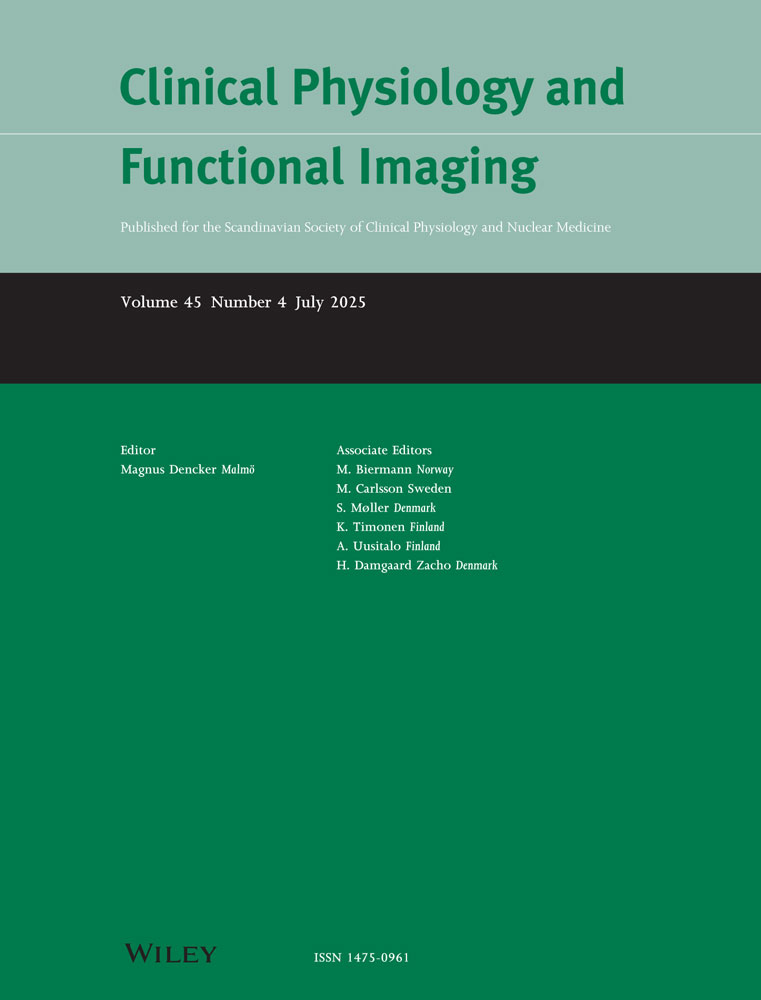Ankle–brachial index after maximum exercise in treadmill and cycle ergometers in athletes
Abstract
Previous works have focused on the normal ankle and arm pressure response to maximum bicycle exercise or moderate walking tests. The aim of the present work was to compare the normal ankle and arm pressure and ankle–brachial index response to incremental maximum bicycle and treadmill exercise in 13 athletes (11 men, two women, 24 ± 11 years) No difference was found at rest on both ankle pressure 139 ± 21 vs. 163 ± 22 mmHg and ankle–brachial index 1·18 ± 0·09 vs. 1·17 ± 0·10 between bicycle and treadmill tests respectively (mean ± SD). One minute after maximum exercise, no difference in arm pressure was found between bicycle (182 ± 16 mmHg) and treadmill tests (190 ± 17 mmHg), whereas ankle pressure was 139 ± 21 vs. 163 ± 22 mmHg respectively (P<0·05). As a result, a significant difference was found in the ankle–brachial index 0·76 ± 0·10 vs.0·86 ± 0·10 (P<0·05) between bicycle and treadmill ergometers during the first minute of the recovery period. Although performed at comparable workloads, a significant difference was noted between running and cycling tests. Thereby, the limit cut-off point for the diagnosis of lower extremity arterial disease in athletes defined for maximum bicycle tests may not apply to maximum incremental treadmill tests.




